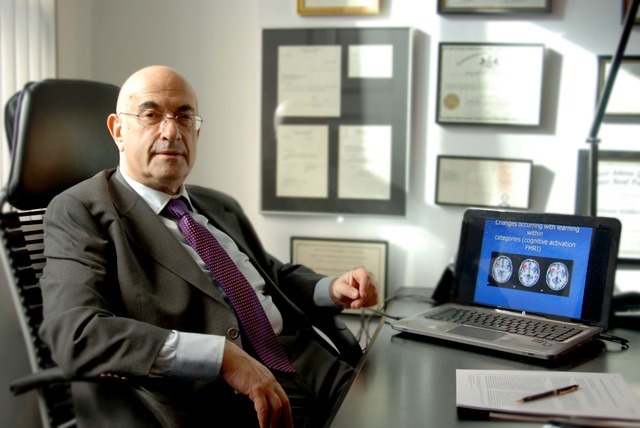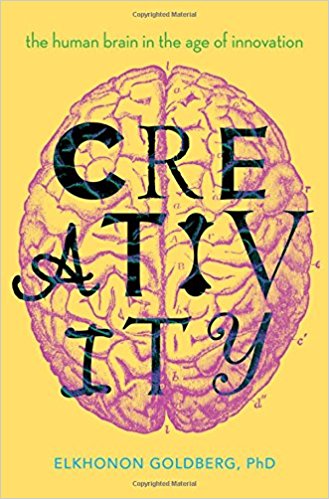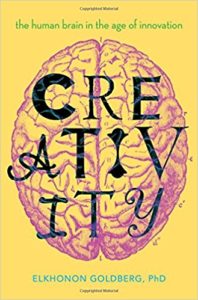A conversation with Dr. Elkhonon Goldberg on Creativity, Neuroscience, and Technological Innovation

Dear Elkhonon, a pleasure to have you with us. Let’s get out the gate by discussing how are new ideas born — for example, how exactly did you first think about writing your new book, Creativity: The Human Brain in the Age of Innovation?
Originally, I set out to write a book about how the brain deals with novelty — a long-standing focus of my own research. But the more I thought about it, the more the subject of creativity was coming up, so I decided to tackle novelty and creativity at the same time.
Do we need yet another book on Creativity?
We absolutely do. Creativity is not just an individual feat; it is embedded into a culture which either foster, stifles, or shapes it in a variety of ways. And it is never a strictly solitary process, since even the most creative mind draws on the previously accumulated knowledge. So, in order to truly understand creativity, we must integrate neuroscientific and cultural perspectives into a coherent narrative.  To my knowledge, this has not been done before, and this is what my book aims to accomplish.
To my knowledge, this has not been done before, and this is what my book aims to accomplish.
I am particularly fascinated by the dynamic relationship between over- and underactivation of prefrontal cortex areas in the creative process and discuss it extensively in the book. This is one of the most intriguing and possibly most consequential aspects of the brain machinery of creativity.
What have we learned about the brain mechanisms of creativity over the last five to ten years?
We have learned a lot: that creativity is not a monolithic trait; that is consists of many moving parts and may take many paths even within the same arena of human endeavor; that it is not linked to any single brain structure or to a single gene or even a small group of genes.
How do you define Creativity, and what can Neuroscience contribute to its understanding?
Creativity is often defined as the ability to come up with content which is both novel and salient. This, of course, is a very loose definition, lacking in precision. I guess, we need more creativity to understand and define creativity. One could argue that such a definition must be formulated before the brain mechanisms of creativity can be studied, but in reality the relationship is more circular: since understanding the mechanisms would help us define the construct, and vice versa.
What are the evolutionary roots of creativity…and are humans better at it?
To understand its evolutionary roots, we are better off starting by examining the evolutionary roots of its building blocks – like cognitive novelty. By doing that, we discover that certain fundamental principles of neural organization have been conserved across species for millions of years. Are humans better at creativity? This is a matter of opinion and definitions. Other species have been able to adapt and survive on this planet for much longer than our own species has existed so far. One can argue that their adaptive ability is “creativity” of sorts.
How do biology and culture interact to enable (or inhibit) creativity?
Let me quote Isaac Newton, who famously said: “If I have seen further it is by standing on the shoulders of Giants.” This captures the essence of the neurobiology and culture interaction. The neurobiological attributes of an individual mind, or a team of minds, drive them toward a scientific, artistic, or technological breakthrough; but it is the culture that provides the conceptual and knowledge base which serves as the point of departure.
How does accelerating technological innovation affect our brains and our future?
This is an exceptionally important question, not sufficiently addressed in the existing literature and addressed extensively in my book. The rate of exposure to technological innovation today is unparalleled in human history, and the rate is likely to keep increasing. This means that every member of our society has to absorb novelty all the time, whether one likes it or not. This accelerated rate of exposure to novelty makes life inconvenient in that we can no longer coast on “mental autopilots”, but it is probably good for our brains and may contribute to a healthier brain aging in important ways.
Given that, how should our education systems evolve to better equip young minds to thrive in that new context and not be overwhelmed by it?
I am not sufficiently creative to solve this conundrum, but the growing interest in instilling foundational concepts and habits of critical thinking is encouraging.
What areas of creativity research are you most intrigued by?
Creativity and AI is one, and cross-cultural creativity research is the other. In fact, we are launching a project on artistic creativity in South-East Asia.
Please tell us more about that project.
While working on the book, I realized that the bulk of creativity research has been conducted in the West, and very little in non-Western cultural environments. But, as I argue in the book, the West does not hold monopoly on creativity, and to understand how neurobiology and culture interact to enable the creative process one must study this relationship in multiple cultures. So I approached several colleagues and together we decided to study the mechanisms of artistic creativity on the Indonesian islands of Java and Bali, both renowned for an exceptional concentration of multiple forms of artistic expression and where I have traveled extensively. In the book I talk about some of our experiences and impressions so far, but the collaboration is ongoing; it involves scientists at Gadjah Mada University of Yogyakarta, Udayana University of Bali, and major American universities.
Thanks. You mentioned your other major interest is about creativity and artificial intelligence (AI). Can AI devices and robots be creative?
If we define a creative product as being both novel and salient, then the authorship of the product shouldn’t matter. So the answer is, Yes.
A decage ago you wrote a great book titled The Wisdom Paradox: How Your Mind Can Grow Stronger As Your Brain Grows Older. Is there also a Creativity Paradox?
Perhaps, of a different kind. It is possible that the minds recognized as the most creative in human history –Leonardo, Newton, Einstein, and so on– may not have been the most creative minds after all. Societal approbation is a necessary driving force propelling individual creativity and also its limiting factor. There may have been some creative minds who were so far ahead of their time that they were not appreciated, and instead were forgotten before society could catch up. I found this thought so poignant that I dedicated the book “to the anonymous creative minds who were so far ahead of their times that nobody noticed.”
The New Book
Creativity: The Human Brain in the Age of Innovation, by Dr. Elkhonon Goldberg
 Description: What is the nature of human creativity? What are the brain processes behind its mystique? What are the evolutionary roots of creativity? How does culture help shape individual creativity? Creativity: The Human Brain in the Age of Innovation by Elkhonon Goldberg is arguably the first ever book to address these and other questions in a way that is both rigorous and engaging, demystifying human creativity for the general public. The synthesis of neuroscience and the humanities is a unique feature of the book, making it of interest to an unusually broad range of readership. Drawing on a number of cutting-edge discoveries from brain research as well as on his own insights as a neuroscientist and neuropsychologist, Goldberg integrates them with a wide-ranging discussion of history, culture, and evolution to arrive at an original, compelling, and at times provocative understanding of the nature of human creativity. To make his argument, Goldberg discusses the origins of language, the nature of several neurological disorders, animal cognition, virtual reality, and even artificial intelligence. In the process, he takes the reader to different times and places, from antiquity to the future, and from Western Europe to South-East Asia. He makes bold predictions about the future directions of creativity and innovation in society, their multiple biological and cultural roots and expressions, about how they will shape society for generations to come, and even how they will change the ways the human brain develops and ages.
Description: What is the nature of human creativity? What are the brain processes behind its mystique? What are the evolutionary roots of creativity? How does culture help shape individual creativity? Creativity: The Human Brain in the Age of Innovation by Elkhonon Goldberg is arguably the first ever book to address these and other questions in a way that is both rigorous and engaging, demystifying human creativity for the general public. The synthesis of neuroscience and the humanities is a unique feature of the book, making it of interest to an unusually broad range of readership. Drawing on a number of cutting-edge discoveries from brain research as well as on his own insights as a neuroscientist and neuropsychologist, Goldberg integrates them with a wide-ranging discussion of history, culture, and evolution to arrive at an original, compelling, and at times provocative understanding of the nature of human creativity. To make his argument, Goldberg discusses the origins of language, the nature of several neurological disorders, animal cognition, virtual reality, and even artificial intelligence. In the process, he takes the reader to different times and places, from antiquity to the future, and from Western Europe to South-East Asia. He makes bold predictions about the future directions of creativity and innovation in society, their multiple biological and cultural roots and expressions, about how they will shape society for generations to come, and even how they will change the ways the human brain develops and ages.
The Book in Context
- Executive Functions in Health and Disease: New book to help integrate Cognitive Neuroscience and Neuropsychology
- The SharpBrains Guide to Brain Fitness: How to Optimize Brain Health and Performance at Any Age
- Solving the Brain Fitness Puzzle Is the Key to Self-Empowered Aging
- To boost creativity, combine systematic daily effort with diverse emotional states


